On today’s podcast, we’re discussing stem cell treatment for pain management.
Pain is something we all experience at some point in our lives. And chronic pain can be debilitating. Chronic pain is also something we’re more likely to experience as we age. So, it’s important to look at ways to support the body’s own innate wisdom to recover rather than use typical approaches that suppress rather than address.
My guest is Dr. Harry Adelson, N.D. who has performed over 6,000 bone marrow and adipose-derived adult stem cell procedures and has injected stem cells into over 1,000 intervertebral discs, placing him among those most experienced in the world with use of autologous stem cells for the treatment of musculoskeletal pain conditions. He is the founder of Docere Clinics and practices in Park City, Utah.
Dr. Harry Adelson is back on The Spa Dr. Podcast to share an update on stem cell procedures and how they can help with longevity and pain. So, please enjoy this interview.
Conquering Pain with Stem Cells
Conquering Pain with Stem Cells with Dr. Harry Adelson
Dr. Trevor Cates : Welcome to The Spa Dr. Podcast. I am Dr. Trevor Cates. On today’s podcast we are discussing STEM cell treatment for pain management. Pain is something we all experience at some point in our lives and chronic pain can be debilitating. Chronic pain is also something we are more likely to experience as we age, so it is important to look at ways to support our body’s own innate wisdom to recover rather than the typical approaches that suppress rather than address. My guest is Dr. Harry Adelson who has performed over 6,000 bone marrow and adipose derived adult STEM cell procedures. He is going to explain exactly what that is and has injected STEM cells into over 1000 intervertebral discs, placing him among the most experienced in the world with the use of autologous STEM cells for the treatment of musculoskeletal pain conditions. He is the founder of Docere Clinics and practices and lives in Park City, Utah, which of course is where I live. Dr. Harry Adelson and I went to Naturopathic medical school together 20 years ago and he is back on The Spa Dr. Podcast to share an update on STEM cell procedures and how they can help you with longevity and pain. So please enjoy this interview.
Dr. Trevor Cates : Harry. It is so great to have you back on The Spa Dr. Podcast. Welcome.
Dr. Harry Adelson: Thank you so much Trevor. It is a pleasure.
Dr. Trevor Cates : So for people who haven’t seen your previous podcast, can you tell everybody a bit about what you do? What are these autologous STEM cells and what calls you to do this? To really focus on this as well?
Dr. Harry Adelson: We were in school together and when I was just wrapping up my first year of Naturopathic school, I had a shoulder injury and it basically threatened to disallow me from rock climbing, and at that point in my life, my whole life revolved around rock climbing and I saw a surgeon and he said, well, I can put a scope in there and cut away the piece of torn Cartilage, and it will probably help in the short term, but it is going to give you problems later in life. And it just didn’t make any sense to me. And here we were, learning the principles of naturopathic medicine, the healing power of nature, the body’s natural healing response. I knew there had to be a way to kickstart my body’s ability to heal itself. And that is when I was introduced to prolotherapy, which is the predecessor of STEM cell therapy. Prolotherapy is an injection of natural substances that are simultaneously nutritive, and an irritant, thereby tricking the body into thinking that it has been re-injured and launching the body’s natural healing cascade. Well, that evolved to the use of platelet rich plasma, which is proteins from your own blood platelets. And then for STEM cells initially from bone marrow, then from fat, then we use some other products, all the exosomes and amniotic membrane and such for the treatment of chronic musculoskeletal pain. And over the last 20 years since I was in school, that has been my entire focus.
Dr. Trevor Cates : So what have you learned, because it has been a while since you have been doing this. How has your practice evolved? Obviously you started with Prolotherapy and then added PRP and then STEM cells. Why did you transition, and what have you noticed with this change.
Dr. Harry Adelson: When I was doing Prolotherapy, I found that the treatments worked, but you had to do many treatments. So I would do routinely 10 to 12 treatments spread out over a year and we would usually get people to the point where they wanted to be. Then when PRP, platelet rich plasma came along, suddenly we were getting it done in four to six treatments. I was turbocharged. And then when STEM cells came along, we were doing one or two treatments and getting people to where they wanted to be. And I think the reason for that is if you look at the mechanism of a healing response, our body is an organism that is able to achieve homeostasis. You have an injury, you have repetitive microtrauma, but then you have a healing response and get back to baseline. Well, when you exceed your body’s ability to heal itself, when the injury is so severe that you can’t get back to baseline, or if you are doing repetitive microtrauma or you are just not giving yourself the nourishment that you need, through poor diet, then you can not get back to that sort of baseline healthy state. So the way that our STEM cells work, because we have STEM cells in every tissue in our body, their role is to maintain the health of their micro environment. If we overwhelm that system, then you are left with what’s called sub optimal healing. First of all, I will talk about Prolotherapy. Prolotherapy is triggering the body’s natural ability to heal itself. It’s putting in this irritant that launches a healing cascade. That cascade has many steps and somewhere now in the middle of it, is where platelets come to the area, releasing proteins that signal the STEM cells to activate. So when we started doing PRP, we are starting here. Then when we started with STEM cells, the way platelets work is platelets release the proteins that actually activate your own STEM cells to regenerate tissue. So when we take STEM cells from other areas of your body and put it in the problem areas, it is like we are skipping all those dominoes and going right to the last one.
Dr. Trevor Cates : Right. And that certainly does make sense and it is nice to have this alternative to surgery. There are sometimes times when you can not avoid surgery. What are the times that you feel like people just need to go straight to surgery or that you would not be able to help?
Dr. Harry Adelson: So there are conditions that are primarily pain conditions and then there are conditions that are functional and sometimes you can have both. STEM cell therapy works great for treating pain. It doesn’t really do anything to improve function. So if you have actual loss of function, that is probably a structural issue and requires a structural solution, such as surgery. Whereas most chronic pain actually has nothing to do with the gross anatomy. That is the thing that is super deceiving, we are so conditioned to just like, Oh, what does the MRI say? And people are so focused on MRI. Well an MRI, gives you a huge amount of information. But most of that information is just distracting information because if you take a hundred people with no low back pain, people who have never had low back pain in their entire lives and you do MRIs on them, and these are people over the age of 45, 60% of them will have abnormalities on MRI. Similarly, if you take people with lots of low back pain, their MRI might be perfectly normal. So that sort of calls into question like what actually is causing the pain. The American college of physicians in 2011 issued a position paper discouraging doctors from ordering MRIs for low back pain unless you suspect cancer or if there is a neurologic deficit like bowel or incontinence or something like that. Really all you are doing by ordering the MRIs, is sending some people down, some expensive and potentially dangerous rabbit holes. So that sort of forces us to ask, well what actually is causing the pain? People in regenerative medicine like myself, think that it is a poor health of the microscopic anatomy. So this is connective tissue. This is really very similar to what you are doing, Clean Skin from within, improving the health of the skin through overall cellular function and the function of your entire organism. Like arthritis of the knee or low back pain, any of these sort of chronic musculoskeletal pain disorders are a non healing wound. It is almost like acne, or just crummy skin. That structure can not seem to heal itself.
Dr. Trevor Cates : Right. And then the conventional approach to treating these is steroid injections.
Dr. Harry Adelson: Which doesn’t do anything. And that is kind of back to your question about surgery. If you break your leg, that is a structural issue. If you rupture your bicep tendon, that needs to be reattached. There are certain things that need to be done. If somebody loses the ability to use their leg, they need spinal fusion. There are certain things, but when it is just pain because of changes in the microscopic anatomy, surgery is not going to do anything to improve that, and steroid injections don’t do anything to improve that.
Dr. Trevor Cates : And the steroid injections, my concern about that too is that you actually could be doing harm too, over time and people will just keep going back in and they will have to keep doing it. But it is not like that with using pure STEM cell injections, every time you go in you are improving it, but with steroid injections, you are just putting a bandaid on it, right?
Dr. Harry Adelson: Yeah, and with steroid injections, there are times where it is really useful if somebody has a brand new tennis elbow, like an extreme tennis elbow, and it’s only been a couple of weeks, a steroid injection might cure that. But for chronic conditions, the very best you are going to get is short term relief. And if you do one or two or three, it is probably not a big deal. But if you keep doing them, there is data now showing that if you do them multiple times per year, over a period of years, it actually contributes to the degeneration of the arthritic joints.
Dr. Trevor Cates : I know that you have been doing this work and have been seeing patients for a while. And now you have a book that is coming out that you have been working on. What was it that called you to write the book? Why did you feel like now is the time you needed to write a book? And I remember when you first said it. When you first told me that you want to write this book.
Dr. Harry Adelson: Well, a lot of it was actually the mandate of our mutual friend Dave Asprey. Dave was in for his second treatment and I was telling him the story of my own personal health episode. Three years ago where I had a bacterial infection of my heart, which resulted in a stroke and then a seven hour cardiac bypass, aortic valve replacement. I told him this whole story and he looked at me and he sort of got real quiet, which is sort of uncharacteristic for him. And he leaned forward and he said, you have got to write a book. And my first thought was, ah, I don’t want to, I don’t want to open myself up to criticism. And then my second thought was, yeah, he is absolutely right.
There is a great quote by a German, which is something to the effect of, all truth passes through three stages. First it is ridiculed, then it is violently opposed, then it is accepted as self evidence. And I have really found myself both, as far as the entire STEM cell industry and myself personally in that second stage, there is so much negative press on STEM cell therapy right now. And I think that is largely because of a kind of pushback and backlash. I hate to say this, but when STEM cells hit the scene there were a lot of doctors that jumped on board without really knowing what they were doing, making these outrageous claims and promises and putting on these dinner parties for trying to sell procedures and then not really knowing how to select patients for treatment. And then you have all these unhappy customers who have spent all this money and it didn’t work. And then you get this big backlash in the industry. And then personally, as the first naturopath to do X-ray guided injection and STEM cell therapy, I have gotten a lot of criticism, mostly from other STEM cell doctors. Like STEM cell MDs. I sort of felt like, when Dave told me that, what better way than tell them my whole story, put it in a book, actually tell the entire story from start to finish. And that is how we ended up here.
Dr. Trevor Cates : Well that is great. I am really excited. I connected you with Dave Asprey. I remember talking to Dave, about STEM cells, and you have to meet Dr. Harry Adelson. And so, he came out to see you. And you have got a documentary coming out too. That is so exciting, and so how does that tie into the book?
Dr. Harry Adelson: Well, I figure there are people who like to read and there are people who like to watch movies. And then there are people who like to do both. The book really is much more about my story. I tell some of my patients’ stories, but it is all about the years that I spent commuting to South America to learn STEM cell therapy and some of the inner workings of my years of rock climbing and how my philosophy about life, just which evolved largely from spending so many years rock climbing. How that evolved. The film is much less about me. And it is much more about patients. Both regular patients, and celebrities. I guess the regular patients are just people who are wanting to get back to living their lives. People whose quality of life, their activities of daily living have been compromised and STEM cell therapy has allowed them to get back to living their lives, doing the things they love to do, riding horses, dancing, jujitsu. And then also the celebrity patients, who have graced my doors. Jim Quick, Dave Asprey, Mark Hyman, John Gray, Pedrum Shojai. We have got a whole bunch, like Vishen Lakhiani, all these terrific visionary people doing this amazing work. But they had neck pain or low back pain or something that was eating up a portion of their concentration and disallowing them from functioning at full capacity. And I had the opportunity to treat them.
Dr. Trevor Cates : Yeah. That is amazing. That is fantastic that in the end that they were willing to be on that documentary and be interviewed and share their own experience. So with the feedback that your patients give, what are the biggest things that they say after one, two, three, or however many treatments you do, and specific areas you do the STEM cell injections, and also you have the whole body makeover.
Dr. Harry Adelson: I would say really the main reason why my overall outcomes are as good as they are, is because I am very careful about selecting people, selecting who I am going to treat. Unfortunately, this is not a miracle cure, and it does not cure anything. Really the reason that I get the success rates that I do is because I really am limiting this treatment to people who are in overall good health and have realistic expectations and have pain caused by degeneration of musculoskeletal structures. If someone is in poor health to begin with, the way this treatment works, we are intentionally triggering the body’s healing response. Well, if your healing response is suboptimal, well, we can move your STEM cells around all day long and it is not going to do much. People who are heavy drinkers, no judgment there, but their body is in a chronic state of inflammation. Same thing with smokers, heavy opioid users, people who have used opioid drugs over a period of years. And again, no judgment. It is just that the big problem with the use of opioids is it restructures your brain’s relationship with pain. So you no longer have the ability to perceive pain through a normal pathway. So even if I help those people, they don’t realize they are being helped. These are the people that have these big pain flare ups. Then people with just terrible diets or morbidly obese. These are the people who generally I recommend that first they spend a year getting their health on solid ground and then move forward. And then once we move forward, what is amazing is frequently one treatment gets people to where they want to be. And I don’t mean 100% pain relief, but enough pain relief one year later, they are glad that they did it and they don’t feel like they need another treatment. Smaller percentage of people have had some improvement at the one year mark, but would like a little more, then we talk about maybe doing another treatment and then a smaller percentage again, somewhere around 10% of the people I treat, I just don’t help. You know me, I am very competitive. I hate to lose and those conversations are forever etched in my memory. But nothing works 100% of the time.
Dr. Trevor Cates : It’s true. And the full body STEM cell makeover, explain what that is. I know you talk about that in the documentary, right?
Dr. Harry Adelson: Sure. So over the years I have developed a reputation as the guy who does big treatments. And part of that is because over the years I have had so many ranchers, oil field workers, farmers, just hardworking people who have worked very hard for many years and don’t take any rest days. High level athletes when they are training, they put as much emphasis into resting as they do training. Well, when you get rodeo athletes or farmers or oil field workers, welders, that sort of thing, they are just working every single day and not taking any rest days. Not only do they get arthritis throughout their entire bodies, but they also get tendinosis, basically a tennis elbow in their entire body. Like their back and their upper extremities, lower extremities. And so I started doing these big treatments, where people would come in and they would say, man, can you just do like my back, my entire spine, both hips, both shoulders, both knees, both ankles. So I started affectionately referring to it as a full body STEM cell makeover. Well then what was interesting, once Dave Asprey became a patient and I started getting all his referrals, I started getting these people who would say, well can’t you just do my whole body in a single sitting? And I thought yeah, actually I can and I don’t see any reason not to. So, I started almost two and a half years ago, Ben Greenfield was one of the first people to undergo a full body STEM cell makeover. Where we just treat every moving part of the body whether or not the person has a pain complaint. Usually, people will come with a primary area of concern. My neck and my knee. Well when we do the whole body, it doesn’t seem to lessen the effect on the area of primary concern. It seems to support it actually.
Dr. Trevor Cates : Right. And would you recommend that for people?
Dr. Harry Adelson: What I sort of jokingly say, people who have exceeded the terms of their warranty, the farmers and ranchers, people with arthritis throughout their entire bodies, or just people interested in vibrant longevity. Thanks to Dave, biohacking and longevity is sort of a hobby now. What we additionally offer for a full body STEM cell makeover is either I do it and I do the musculoskeletal structures, the entire spine, both shoulders, both elbows, both wrists and thumbs, both hips, both knees, both ankles and great toes. And then people have the option of additionally having my colleague, Amy Killen, to be present. You have interviewed Amy I think a couple of times. She’s terrific. What she does is she puts STEM cells into the skin of the face and neck, to improve elasticity and hydration, into the scalp to thicken the hair follicles and into the sexual organs to improve sexual function in men, erectile dysfunction. And in women, vaginal dryness or atrophy.
Dr. Trevor Cates : It is really amazing. Can you walk everybody through what it is like to come to see you? What to expect because it is different. I also would love for you to touch on the different types of STEM cells. You can get STEM cells from different places. We talked about this in your last interview, but just briefly explain the difference between how you get the STEM cells.
Dr. Harry Adelson: Sure. There are two main categories, autologous and allogeneic. So autologous means it comes from your own body. The word autologous means donor and recipient are the same person. And the two major sources for STEM cells from one’s own body are bone marrow and fat. And I use both. Then there is allogenic. Now this is where a lot of people have sort of jumped on the bandwagon and what you hear being used most frequently is umbilical cord STEM cells. I have not had great experience with using umbilical cord STEM cells just on their own. It is what a lot of doctors do and I think, in some cases it helps, but largely this is where you are seeing a lot of dissatisfied people online giving one star reviews. The little bit that I have experimented with it, I just have not found that it works that well. I don’t really use them hardly at all, because the people who come to me specifically want STEM cells from their own body. And I am just philosophically opposed to using STEM cells from someone else because they don’t want somebody else’s genetic material being introduced into their bodies. Now, the scientific literature that exists, it seems that it is safe to use STEM cells from umbilical cord because what happens is those STEM cells exert their effect. They trigger your own tissue to heal and they control inflammation. But once they take up residence in your body, they don’t divide. So they don’t engraft into you. However, people just don’t like the idea. And if that’s the case, that’s fine. The products that I do use are exosomes and amniotic membranes. So exosomes are the growth factors from placental STEM cells without the STEM cells themselves. So what makes my STEM cells 51 year old STEM cells is as we age, our own STEM cells lose the ability to manufacture these very vesicles filled with growth factors that are called exosomes, which are the active ingredients. So what we do is we take the exosomes from these placental STEM cells, supplement your STEM cells with them. We believe that your own STEM cell actually absorbs them into themselves, thereby functionally making your STEM cells of that of a younger person. Amniotic membrane does not contain cells, but it is very rich in hyaluronic acid which you talk a lot about in your book. Hyaluronic acid is a phospholipid. It is able to retain many thousands of times it’s own molecular weight in water. So that is what’s responsible for maintaining moisture of tissues, either in skin or in joint surfaces or intervertebral disks. So that is my formula, STEM cells from some one’s own bone marrow, from their own fat use some exosomes and use some amniotic membrane.
Dr. Trevor Cates : Perfect. And then you also still do some PRP, because I came in to see you, and you did PRP with exosomes with me.
Dr. Harry Adelson: Sure. It is mostly with locals or friends or family or that sort of thing. But primarily locals. The people who travel to see me, and most of my patients travel to see me. Are coming for big STEM cell procedures.
Dr. Trevor Cates : And you did injections in my neck and my feet because I have some pain from all that injury. And I am doing great. I am feeling much better. It was amazing how quickly I felt improvement. I was surprised at that. And I am still feeling the effects of it. I would like to come back in for another treatment at some point.
Dr. Harry Adelson: PRP, usually takes a couple of treatments. We plan on doing more than one treatment. And with how quickly it works, there is a reason for that. Because the thing about STEM cell therapy, when you are treating most things, like an arthritic joint or a desiccated disc, dehydrated disc, and we are treating that microscopic anatomy, it takes a while to trigger the growth of healthy new connective tissue. So it can take two to six months for the treatment to really work, but there is one exception and that is you, that is injuries that involve a lot of fibrosis where there are a lot of adhesions. Approximately how many times did you fall off a horse in your life?
Dr. Trevor Cates : Oh my God, I have no idea how many times growing up that I fell off. And then dancing point on pointe shoes, that was the problem with my feet, I developed arthritis from that.
Dr. Harry Adelson: Right. But with the whiplash, with all those neck injuries, a lot of what is causing that pain are adhesions, in those tiny little intrinsic muscles of the neck where they pass right next to the nerves and just introduce any kind of fluid. That is where prolotherapy actually works really well too. It doesn’t really matter what you put in there, but if you just just inject fluid in, and break up those adhesions, people report immediate relief.
Dr. Trevor Cates : Yeah. That is great. When people come in to see you, can you explain what that is like?
Dr. Harry Adelson: Sure. So we do everything under sedation administered by an anesthesiologist. First of all, if people are interested in being treated, we have them fill out just a couple of short forms that I have created. And if they have imaging, if they have an MRI, if they have a x-ray, send that in as well. And then for no charge, I will look at that and I have a pretty clear idea whether or not this person really does need surgery. Because I have these questionnaires that are very specific. I can usually tell if somebody is a surgical candidate and I can recommend that or if I think there is a chance that I can help them. If the answer is yes, then we schedule a 30 minute phone consultation, where I go through a series of questions and generally have at that point a pretty clear idea of what it is that I would like to do. And then we can give you a very clear concept of what it would look like to move forward. And for the people who decide to get treated, like I said, 90% of our patients come in from out of state. We ask that you plan on spending three nights here, arriving the day before. We are 25 minutes from Salt Lake City airport, two great hotels within walking distance from my clinic. The morning of your procedure, you come in, you don’t eat or drink anything that morning, you meet with me. Then you meet with my nurse, and meet with the anesthesiologist, and then we get you on the table and all you have to endure is a tiny little needle in your hand and you go to sleep. Two hours later you wake up and we are done. And we have done lipo aspiration. We have done the bone marrow aspiration, and we have done all the injections. People wake up a little bit sore, but not unbearable. And then we just wait and see and for the treatment to kick in, which again can take two to six months.
Dr. Trevor Cates : All right, well that is pretty simple. And you have had so much success with this, and it is fantastic to see that over the years. Tell everybody where they can find out more about your documentary, your book, where can people go to find that?
Dr. Harry Adelson: Sure. My website is docereclinics.com. And you can go to the contact page and get on our radar and we will get you all the information for the film and for the book and everything else.
Dr. Trevor Cates : All right, great. So what is next Harry? What is coming up now?
Dr. Harry Adelson: Well, next week I have the premiere party. We are throwing a big party at the St. Regis here in Deer Valley and Dave Asprey is going to be here and Mark Hyman, John Gray, Jim Quick and Vishen Lakhiani. We will have most of the big names from the film that are actually going to be here. Unfortunately, you have a prior commitment. You are going to be in California. I hate it that you are not going to be there. We have got a bunch of big wigs coming in to attend this premiere. So my world is all about arranging the seating chart. And I am kind of going nuts with that right now, but once we get past that, just continuing to spread the message of positivity.
Dr. Trevor Cates : Yeah. Amazing. You have other doctors in your clinic, so you have support and you have been expanding. I love seeing that.
Dr. Harry Adelson: We are expanding. We are bringing on an associate, who I hand picked him years ago and he is finally ready to move here from Arizona. And we are getting ready to expand the facility and taking over another 1500 square feet. We are going to put in hyperbaric oxygen and cryotherapy and PMF and far infrared and ozone. It is going to be our center for vibrant longevity.
Dr. Trevor Cates : Fantastic. Harry, thanks again for coming on today. Really appreciate you taking the time to tell us all about pain management, STEM cell therapy.
Dr. Harry Adelson: Thank you Trevor. As always, it’s a pleasure. I am looking right out my office window at your house right across the Swaner preserve.
Dr. Trevor Cates : Yeah, we can wave at each other. Thanks Harry.
Dr. Harry Adelson: Thanks Trevor.
Dr. Trevor Cates : I hope you enjoyed this interview today with Dr. Harry Adelson. To learn more about him, you can go to TheSpaDr.com, go to the podcast page with his interview and you will find all the information and links there including how to learn more about his documentary and his new book. Again, just go to TheSpaDr.com, go to the podcast page with his interview and while you are there I invite you to join The Spa Dr. community, so you don’t miss any of our upcoming shows and information and if you haven’t already taken the skin quiz is a great way to find out what information your skin is trying to tell you about your health and what you can do about it. Just go to thequiz.com. I also encourage you to join The Spa Dr. On social media, on Instagram, Facebook, Twitter, Pinterest, YouTube. Join the conversation there and I’ll see you next time on The Spa Dr. Podcast.
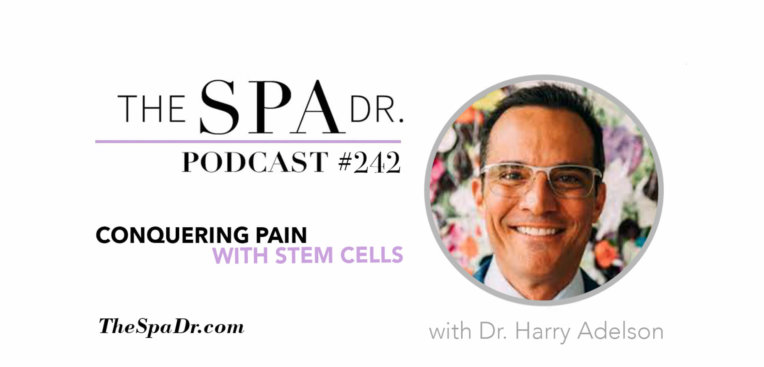
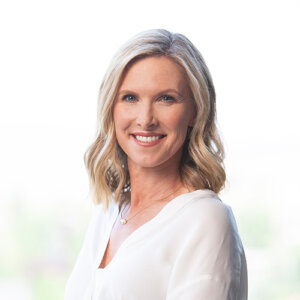
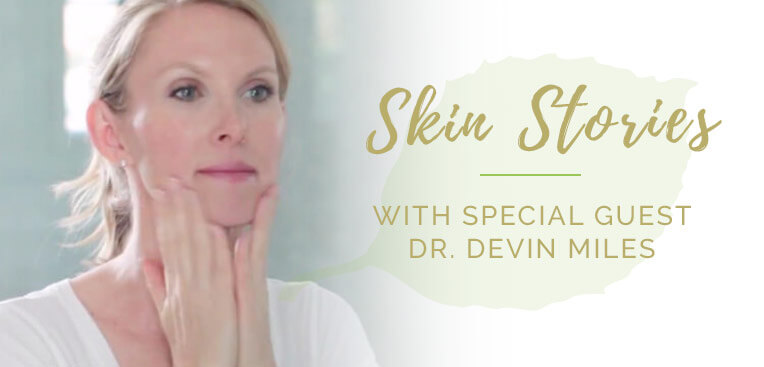
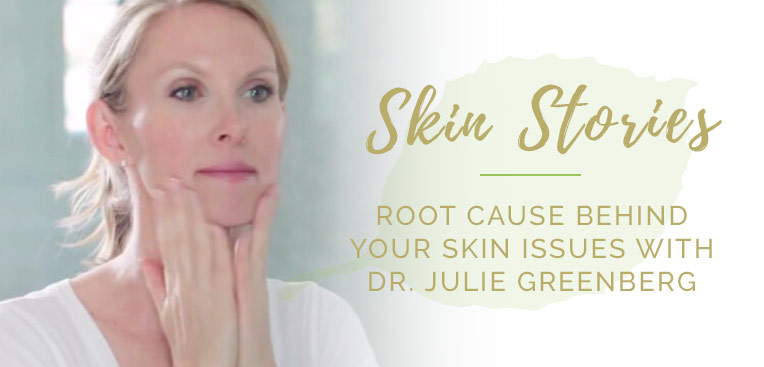

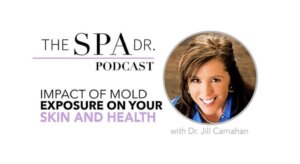
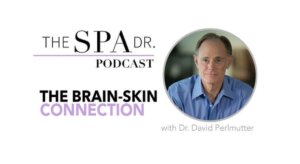
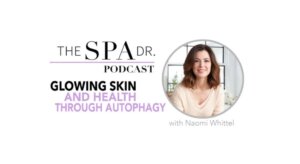
Reader Interactions